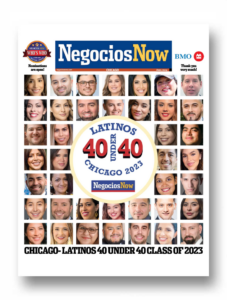Two years ago, when Thaddeus Arroyo was asked to move to Mexico to lead AT&T’s operations there, he hesitated. He liked what he was doing at the time and taking the position wasn’t what he had in mind for his next step.
But he says he would have been a hypocrite if he had turned down the opportunity. He routinely advises others to step into uncomfortable situations, knowing moments like that have always been the ones that most often contributed to his own growth and success.
Arroyo just returned from Mexico in January, where he served as CEO of AT&T Mexico. There, he led the ongoing expansion of AT&T high-speed mobile network and distribution channels.
“This transformation is probably the most exciting one that I had an opportunity to lead,” Arroyo said. “We were entering Mexico during a historical moment for the telecommunications industry. To be a part of that right on the heels of fresh reform measures turned out to be one of those experiences that contributed not only to my professional but personal growth.”
Arroyo is now AT&T’s chief executive officer for business solutions and international, overseeing the company’s operations in Mexico and DIRECTV in Latin America as well as serving more than 3.5 million business customers in nearly 200 countries and territories. His client list includes almost all of the world’s Fortune 1000 companies.
And it’s an exciting time to be at AT&T. Arroyo said the more than 140-year-old company is modernizing its core capabilities and developing a new generation of tools to make its customers more competitive.
“AT&T brings capabilities that help our customers not only respond to disruption, but create their own disruption,” Arroyo said. While the ecosystem continues to change because of technology trends, AT&T has tried to build a foundation. “The one core element of this digital world is the need for a strong network platform. That’s what AT&T is forging the future on.”
One of the latest fads in this digital world is ever-increasing network speed. AT&T plans to launch a 5G market in Austin and Indianapolis this summer. The wireless internet connection will provide speeds five times faster than what is available on the company’s 4G LTE network today.
But beyond speed, 5G is expected to greatly expand the capability of different applications. The faster connection brings reduced lag time, or latency, from when a user presses a button and the app actually responds.
Arroyo believes this improvement will have significant, positive consequences for a range of applications, including virtual reality and autonomous cars. If someone is controlling a car remotely, he offers as an example, pressing a button to brake needs to correspond to an almost immediate braking of the car.
“You can’t push a button to stop the brake and wait a second,” Arroyo said. “It has to be immediate.”
5G gets the nation that much closer to eliminating latency.
As AT&T evolves, Arroyo finds it important to make sure the skills of the team evolve with it. He is committed to helping employees master the skills they’ll need to keep the company at the front of the pack for whatever comes next. Because it’s coming soon. Every two years or so, there’s a massive transformation in technology and communications. 4G has only been around for a couple years and already 5G is waiting in the wings to replace it.
That commitment to ever-evolving skills includes a focus on diversity and inclusion. Latinos are expected to make up 60 percent of total population growth between 2005 and 2050, and Arroyo says it is important for careers in science, technology, engineering and math to be made attractive to them. So far, Latinos are underrepresented in tech fields, but success of companies like AT&T as well as society as a whole may depend on fixing that.
A driving question for Arroyo: “How do we ensure that our community is oriented toward science, technology, engineering and math and taking advantage of education to be ready for these great skills of the future?”
By Tara García Mathewson










